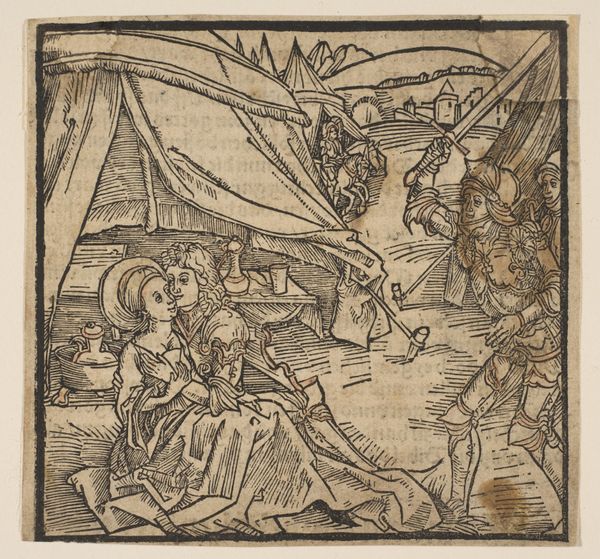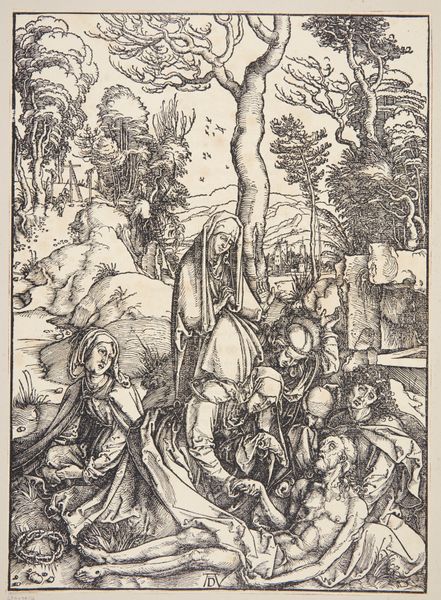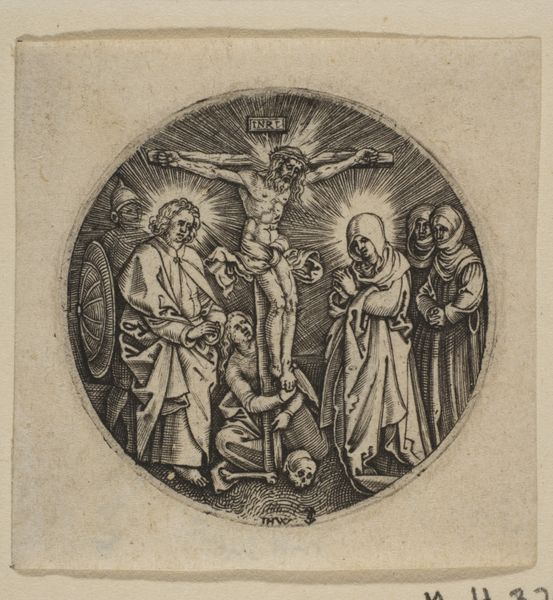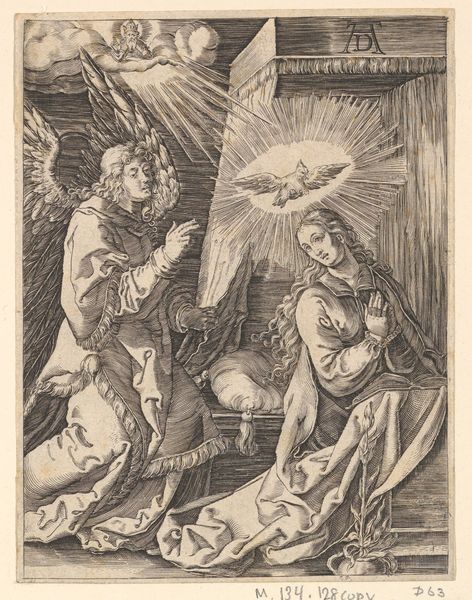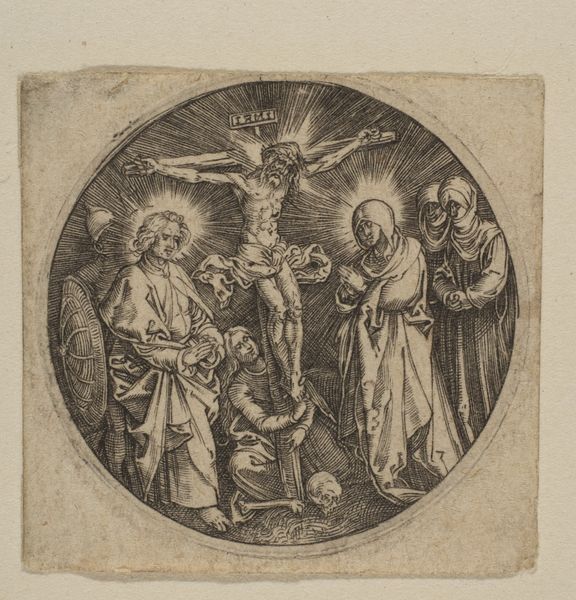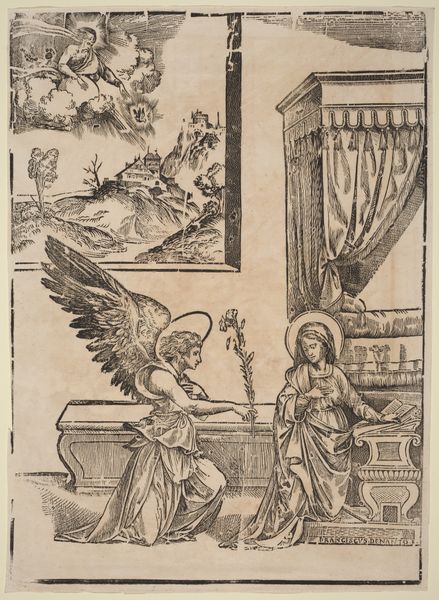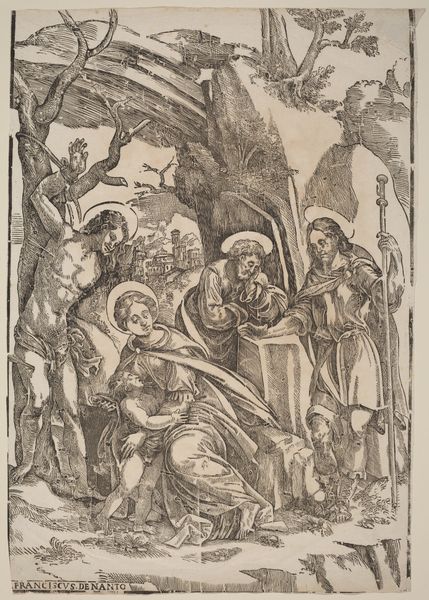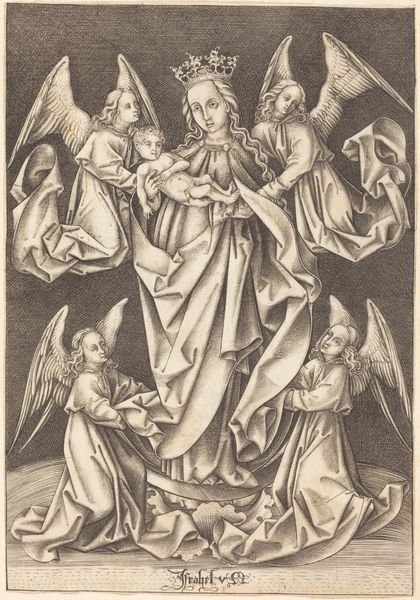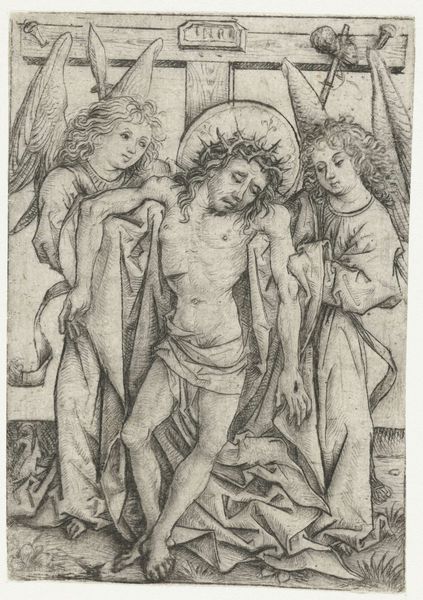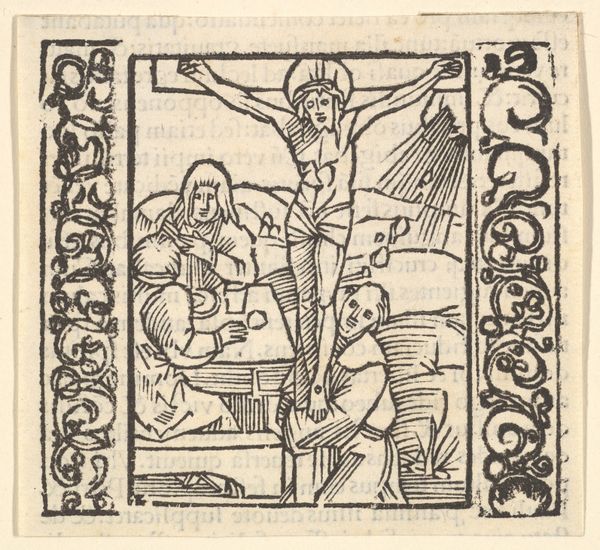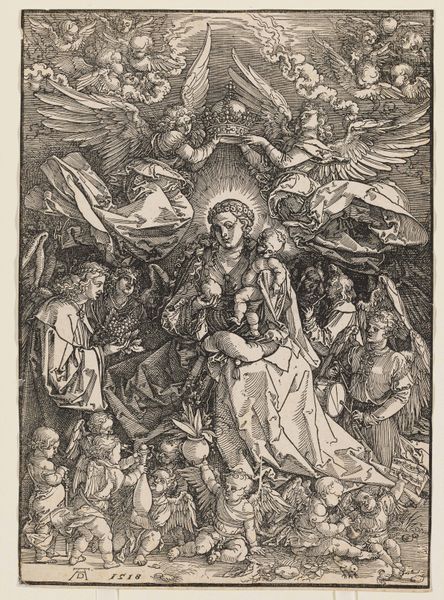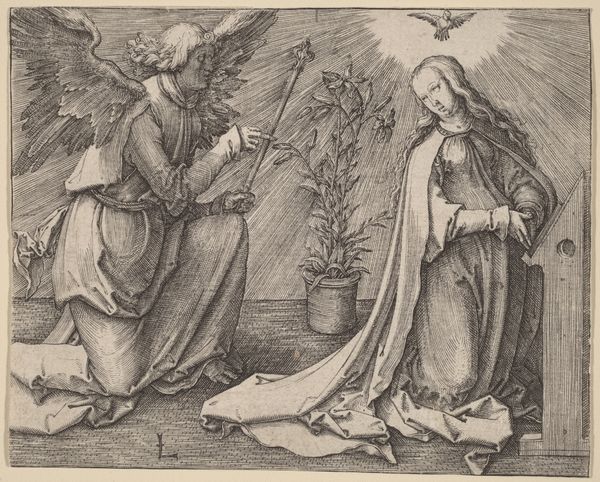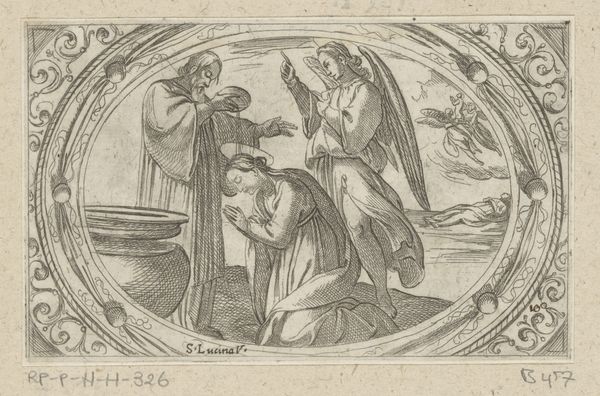
drawing, print, engraving
#
drawing
# print
#
figuration
#
northern-renaissance
#
engraving
#
angel
#
christ
Dimensions: Sheet: 6 1/4 x 6 1/4 in. (15.9 x 15.9 cm)
Copyright: Public Domain
Editor: Here we have Martin Schongauer's "Baptism of Christ," created sometime between 1465 and 1475. It's an engraving, giving it this incredible detail and delicate feel. I'm immediately struck by the serenity of Christ amidst this somewhat angular, almost rocky landscape. What grabs you when you look at this, Professor? Curator: It's that stark contrast you mentioned, isn't it? Schongauer somehow manages to blend this otherworldly calm with the almost severe lines of the landscape and figures. Look at how precise each line is, each fold of fabric. And notice how God, the Father, looks down in that fluffy cloud—sort of like the softest pillow imaginable, in contrast to the rock. The water is rendered with such linear detail—do you see how each wave seems precisely etched? Editor: I do! It's not how I'd expect water to look. Were artists striving for realism at this time? Curator: Not necessarily realism in the way we think of it today. Remember, this is the Northern Renaissance. There's still a strong influence of earlier styles and conventions at play, so the artist’s symbolic language and the engraving’s material qualities speak just as loudly as the figures. How do you react to that? Editor: It makes me see it as more of a theological statement. Almost like a map of faith rendered in ink, rather than a snapshot of an actual event. It's less about how it literally looked and more about the significance of the baptism, laid out for contemplation. Curator: Exactly! It’s almost a meditation on faith. Schongauer takes this hugely important event and distills it into something intensely personal, doesn't he? Editor: I never would have thought of it that way on my own. It's funny; I looked at this picture before, but talking about it has changed the whole experience!
Comments
rijksmuseum about 2 years ago
⋮
The virtuoso Martin Schongauer was a key figure in the development of printmaking. He engraved deep lines, which made it possible to print his copper plates in large editions. His prints were copied extensively during and after his life, whereby his work circulated even more widely. The influence of his designs on other art forms cannot be stated too strongly. They reverberate in almost every conceivable artistic expression, from paintings to pottery.
Join the conversation
Join millions of artists and users on Artera today and experience the ultimate creative platform.
